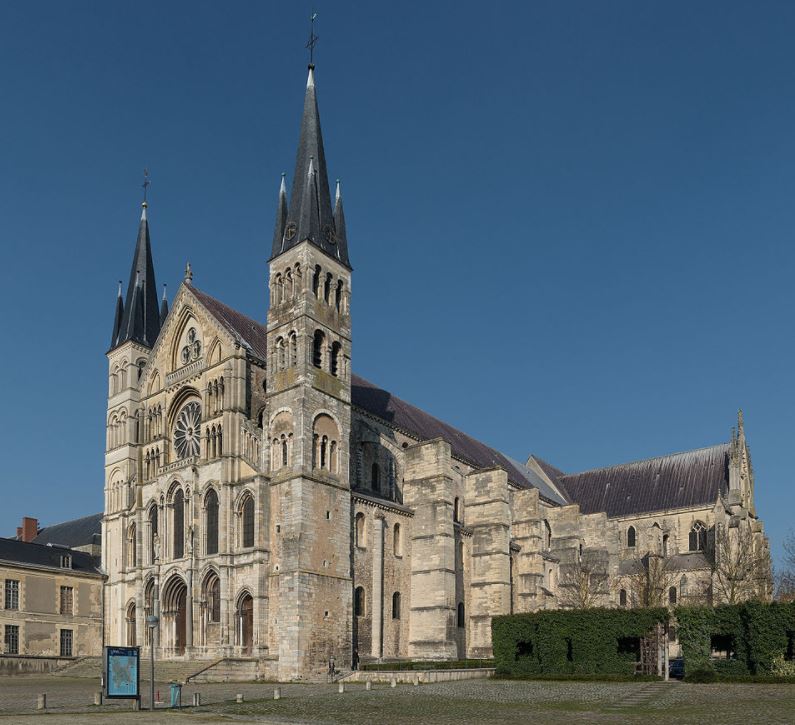One of the most important churches in France is considered to be one of the finest examples of a Gothic cathedral that you’ll ever find.
In this article, you’ll discover the ultimate list of interesting facts about Reims Cathedral, a building in Reims that played a crucial role in the history of France.
1. It’s located right in the heart of the city in the northeast of France
Reims Cathedral is a magnificent Gothic Cathedral located in the city of Reims. This city is located in the Marne department of the Grand Est region of northeastern France.
Reims has been an important city in the region ever since Roman times and was founded by the Gaul tribe the “Remi” around 80 B.C. It eventually ended up becoming the capital of the Roman province of “Gallia Belgica” when it was named “Durocortorum.”
Today, Reims is one of the centers of champagne production and is home to some of the largest champagne-producing houses in the world. These offer tours to tourists in the numerous caves and tunnels where champagne is aged.

2. The cathedral was built on the location of a Roman bath
The first Christian church in Reims was founded by Saint Sixtus, presumably between 250 and 300 A.D. The first cathedral in its present location, however, wasn’t founded until the 5th century during the Merovingian period.
One of the most remarkable facts about Reims Cathedral is that this original church was built on the location of an ancient Roman bath that was built by Constantine the Great, the first Roman Emperor who adopted Christianity in the 4th century.
This cathedral was dedicated to the Virgin Mary which is also the reason why the cathedral is still officially called the “Notre-Dame de Reims” today.
It was a relatively humble structure compared to today’s Gothic church and had a square design with a circular interior measuring about 20 by 55 meters (66 by 180 feet).
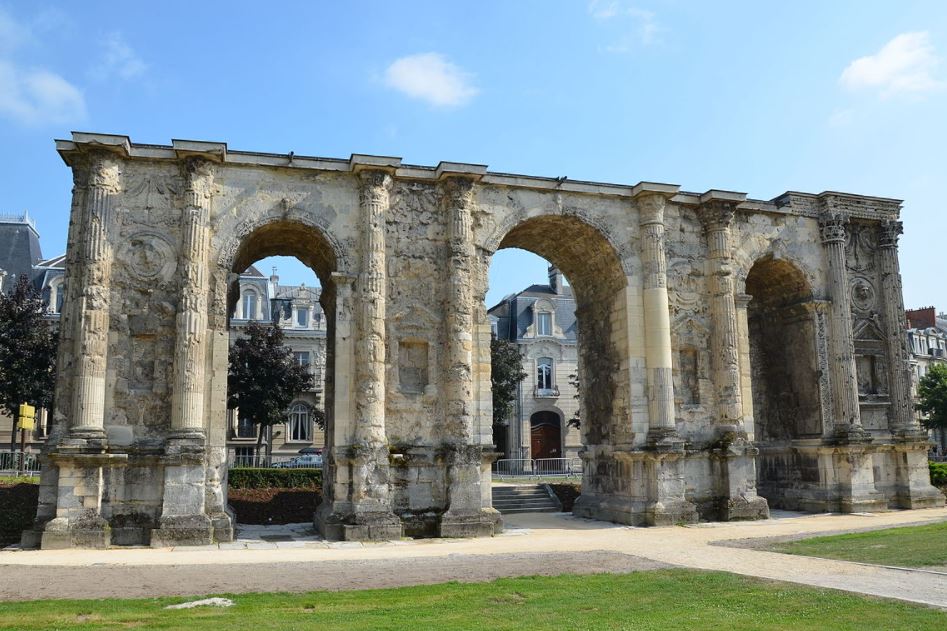
3. The first King of the Franks was baptized here in the 5th century
One of the most important moments in the history of Reims Cathedral was the baptism of King Clovis I in the year 496. This was conducted by the bishop of Reims at the time, Saint Remigius, a man also known as “Saint Remi.”
King Clovis I (466-511) was the first King of the Franks who united the local Frankish tribes under one sole ruler. This event set in motion a tradition that would eventually last between the 11th and 19th centuries, the coronation of the Kings of France.
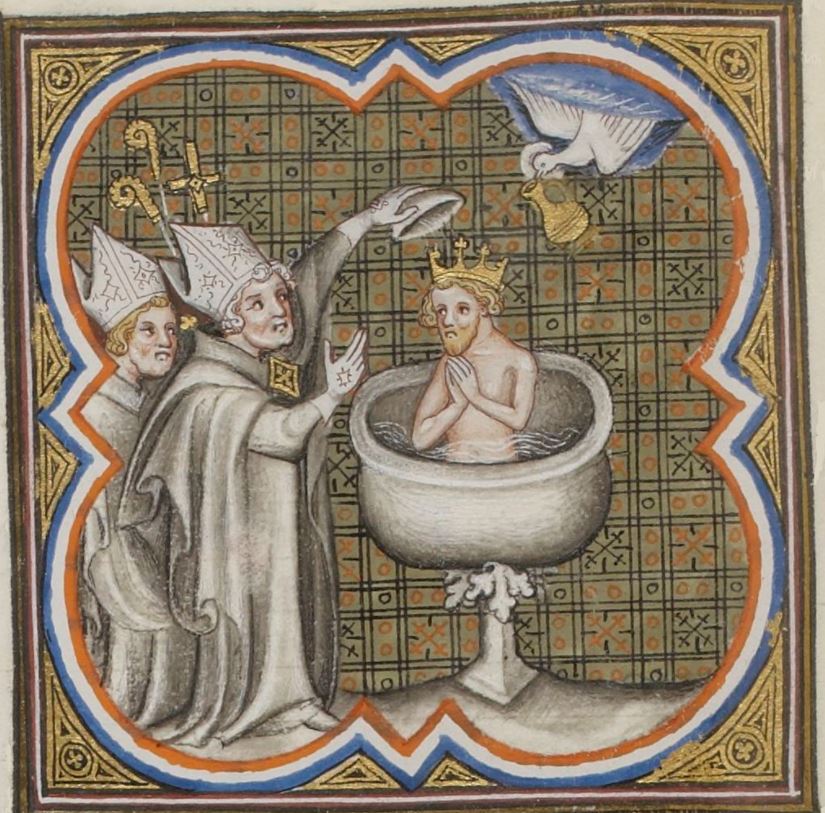
4. The 9th-century cathedral built here was already very impressive
By the 9th century, the old cathedral was deemed too small and was pretty much falling apart. Following the coronation of Louis the Pious in the year 816, the cathedral was seriously expanded for the first time.
This new cathedral not only had an impressive length of 86 meters (282 feet) but its interior was also richly decorated with gilding, mosaics, paintings, sculptures, and tapestries.
5. The tradition of crowning the Kings of France here started in 1027
The new version of the cathedral allowed Reims to increase its political power. This in combination with the fact that Clovis I was baptized here resulted in the cathedral becoming the traditional coronation place of the Kings of France.
One of the most interesting facts about Reims Cathedral is that all but 7 French Kings were coronated here. The exceptions were Hugh Capet (939-996), Robert II (972-1031), Louis VI (1081-1137), John I (1396 – died as an infant), Henry IV (1553-1610), Louis XVIII (1755-1824), and Louis Philippe I (1773-1850).
The tradition really started with the coronation of Henry I of France who was crowned here in 1027. It ended with the crowning of Charles X in 1825, the final King of France crowned at Reims Cathedral.
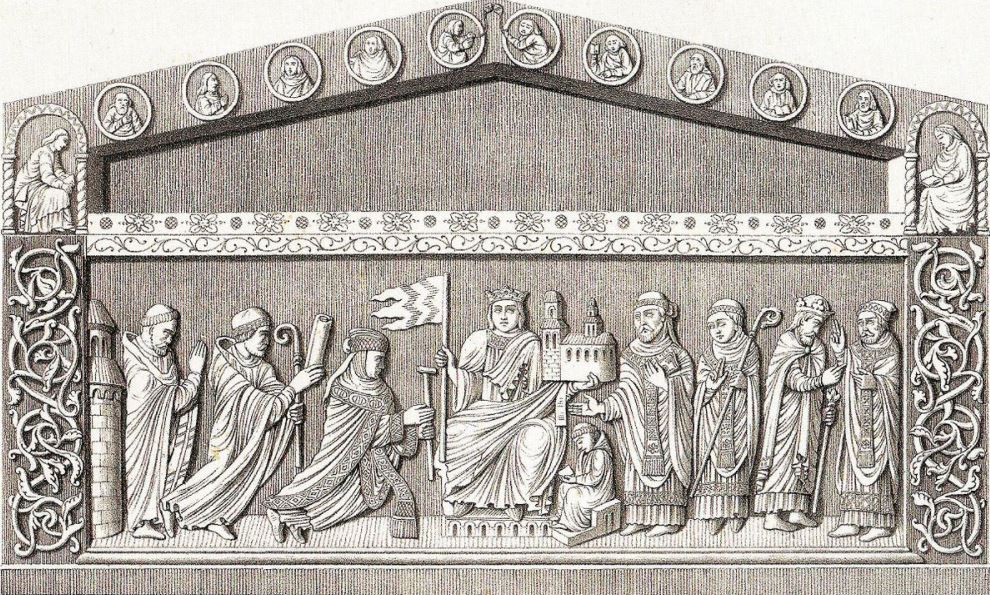
6. The first Gothic cathedral in Reims was destroyed by fire in 1210
The 9th-century cathedral was again deemed too small in the 12th century so it was enlarged in the early Gothic style. The nave and apse of the 9th-century church remained as they were so only both ends of the cathedral were rebuilt, giving it a total length of 110 meters (360 feet).
This gave the church a similar appearance to the Royal Abbey of Saint-Denis just outside of Paris. This is another very important church that was completed in the 12th century and one of the first complete Gothic cathedrals.
The early Gothic Cathedral in Reims was eventually destroyed by a fire on May 6, 1210.
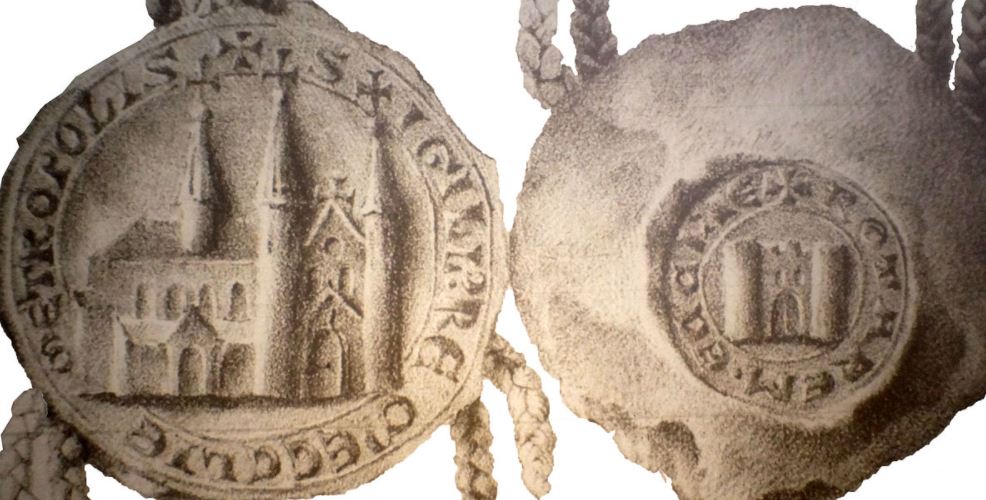
7. The current Gothic cathedral was built between 1211 and 1275
The first stone of the cathedral we see today was laid just a year after the early Gothic cathedral was destroyed in 1211. The church was built in record time at the time because new building techniques were used, such as the use of pre-fabricated stones.
The first chapel at the end of the structure was already in use by July 1221 and by 1230 the entire nave was nearly completed. The structural work of the cathedral was completed in 1275.
The final elements of the cathedral were the upper galleries of the nave, which were completed in the year 1505, nearly 3 centuries after the first stone was laid!
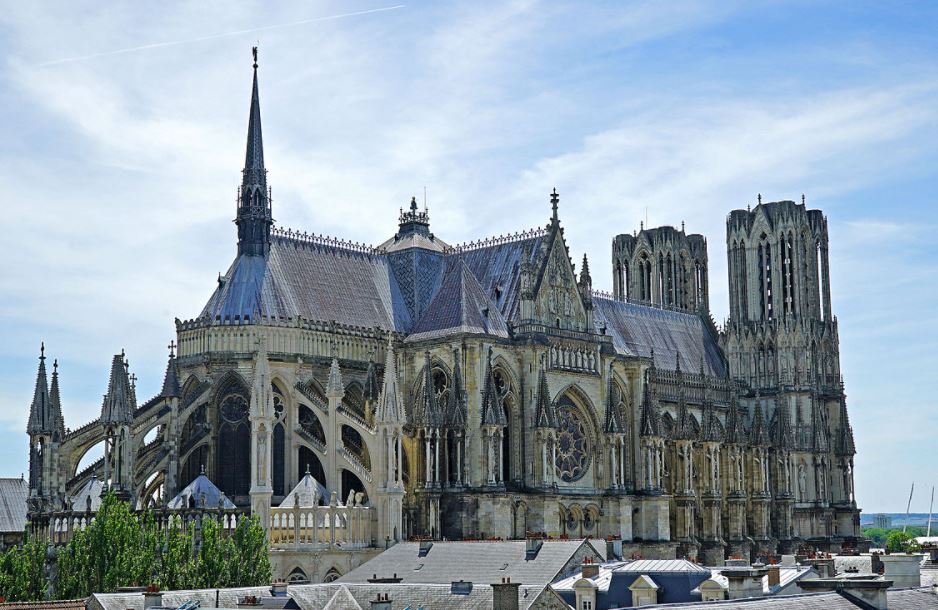
8. The English briefly controlled the cathedral in the 15th century
One of the most remarkable events in the history of Reims Cathedral is that it was briefly held by the English during the Hundred Years’ War’ (1337-1453). This happened following their surprising victory over the French during the Battle of Agincourt in 1415.
Reims and many other parts of northern France were therefore under English control until Joan of Arc recaptured Reims in 1429.
Because of this, the French heroine has been immortalized with 2 statues, one equestrian statue just outside of the cathedral and one statue inside the church.
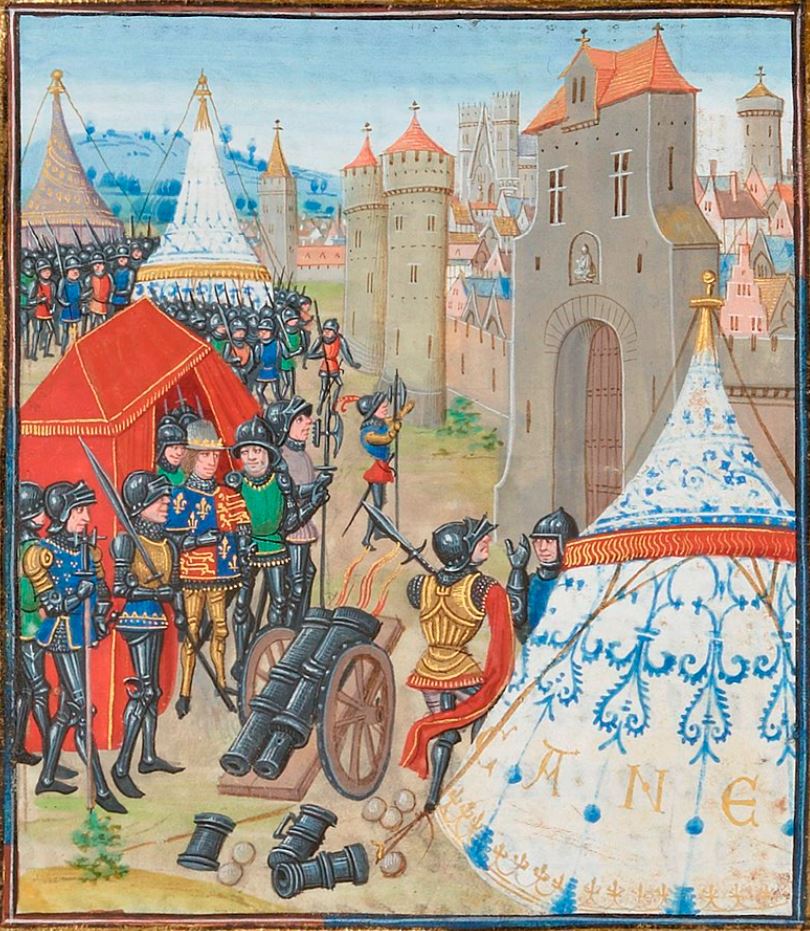
9. It escaped the revolution from destruction but not World War I
Most of the works on the cathedral during the 17th and 18th centuries happened inside. Many of the medieval elements such as the altar, choir stalls, choir screens, and furniture, were replaced with modernized versions at the time.
It didn’t suffer any serious damage during the French Revolution in the 1790s, unlike many other churches in France. It did, however, take serious blasts from bombardments during World War I.
The cathedral was turned to rubble but ended up being completely restored between 1919 and 1938, resulting in the magnificent structure we see today.
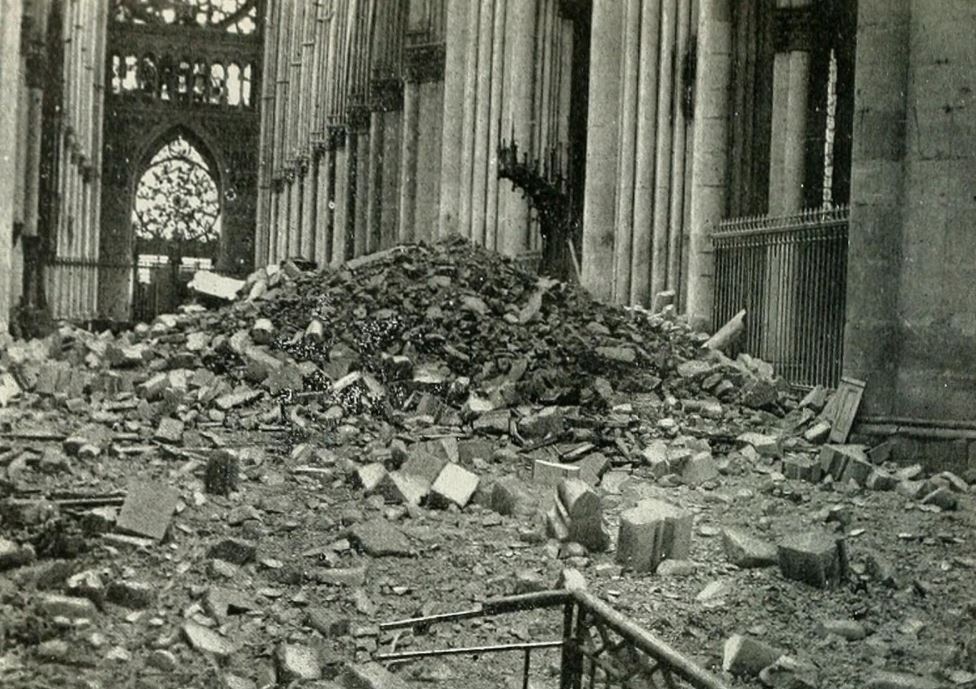
10. How big is Reims Cathedral?
The most prominent features of the cathedral are the two towers on the western façade. Even though these appear to be quite imposing, they only reach a height of 81 meters (266 feet).
The cathedral is extremely long, though, as it has a total length of 149.17 meters (489.4 feet). It also has a total floor area of 6,650 square meters (71,600 square feet).
To give some reference to this number, that’s quite a bit longer than the largest gothic cathedral in the world (and the third-largest in general), Seville Cathedral in southern Spain.
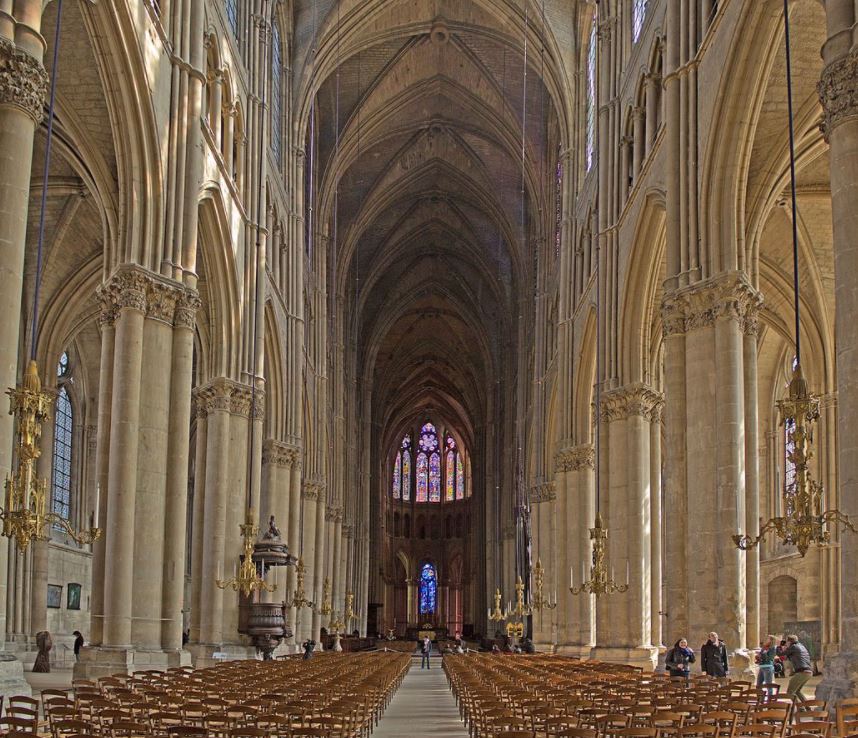
11. The west façade features 56 statues of Kings of France
One of the most impressive features on the exterior of the cathedral is located above the portals on the western façade of the building, which are pretty impressive too, and right in between and below the two main towers.
This section is referred to as the “Gallery of the Kings” and features a total of 56 sculptures, each with a height of about 4.5 meters (15 feet).
These statues depict the Kings of France, all the way back to Clovis I, the first Christian king of the Franks. He is accompanied by his wife, Clotilde, to the right, and Saint Remigius to his left.
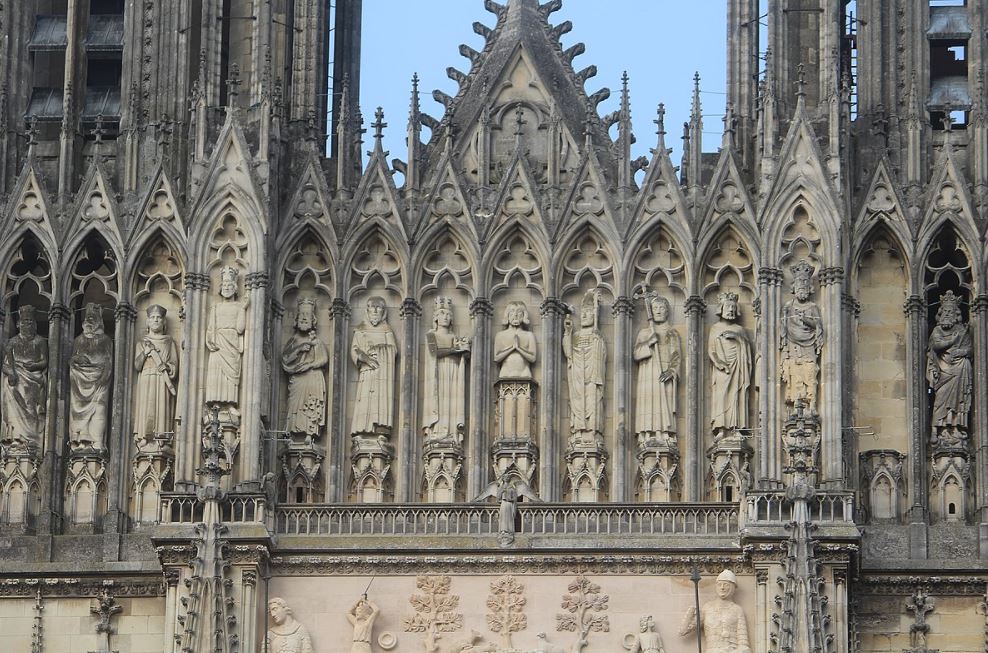
12. The spires of the towers were destroyed and never rebuilt
The original spires and roof of the cathedral were destroyed by fire in the year 1481. The idea was to build spires on top of the two main towers as well, but this never happened.
If the original plan had been followed, a dominating 170-meter (557 feet) tall bell tower would have been constructed right over the transept of the church as well, another project that was too expensive to complete.

13. The apse is topped with a distinctive Gothic structure
If you want to get a glimpse of how this enormous bell tower and immense spires on top of the two towers might have looked like, then you can! Just above the apse of the church, we can see a distinctive Gothic spire rising.
Even though this lead-covered timber flèche only reaches a height of 18 meters (59 feet), it gives us an idea of how the church would have looked like if the original plans had been completed.
This slender spire isn’t the original one, though, as it was completely reconstructed during the 1920s following the devastating events during World War I.

14. It still features original 13th-century stained glass windows
One of the most amazing facts about Reims Cathedral is that there are still many original 13th-century stained glass windows in place. This means that these windows have been decorating the church for nearly 800 years!
This is the case for many windows of the interior of the western façade, the rose window inside the northern transept, and some of the highest windows inside the choir.
As you would expect, these windows depict various Biblical scenes, including the Dormition of the Virgin and multiple scenes derived from the story of the Biblical creation.
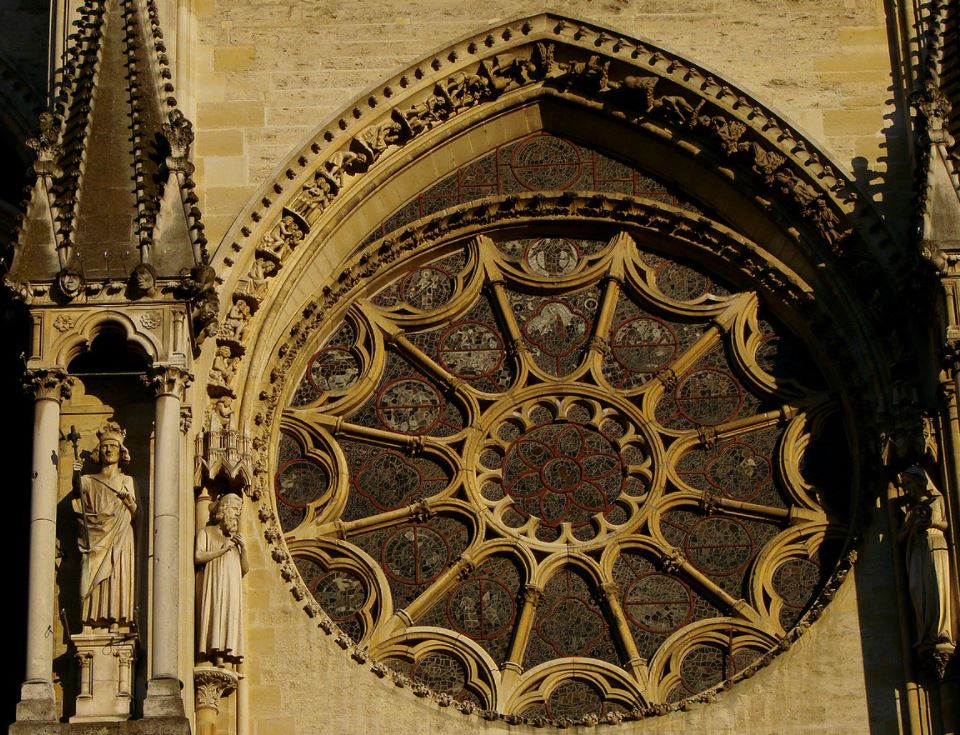
15. It became a UNESCO site along with 2 other famous landmarks
The cathedral has often been described as a prime example of Gothic architecture. This notion together with its importance in the history of France has resulted in it being listed as a UNESCO World Heritage site in 1991.
It wasn’t listed alone, though, because two other fascinating structures in Reims were included as well. These include the former archiepiscopal palace called the Tau Palace, and the Abbey of Saint-Rémi.
The abbey is a remarkable structure because it still features its original 9th-century nave in which the remains of Archbishop Saint Rémi (440–533) were interred.
Yes, these were the guys who baptized King Clovis, quite remarkable don’t you think?
